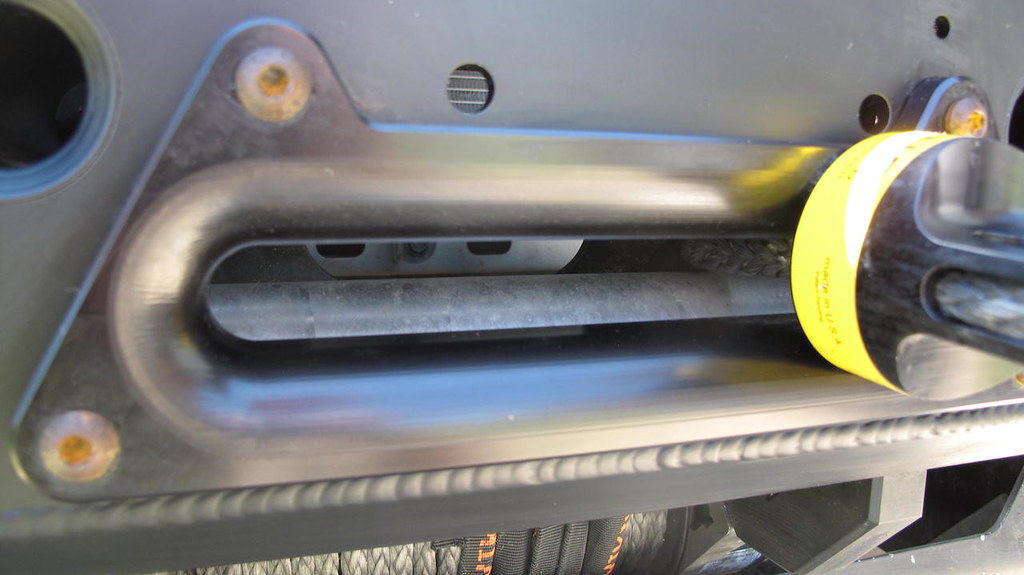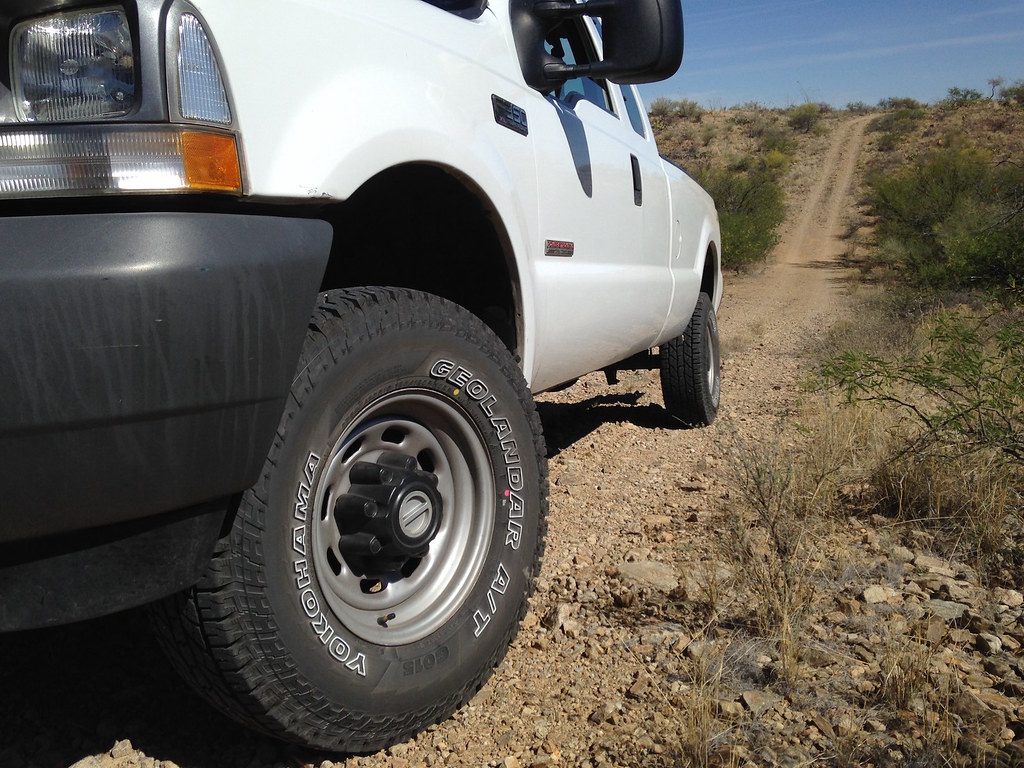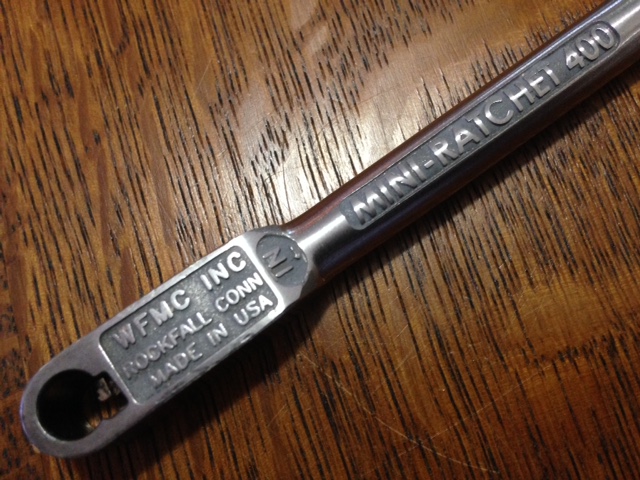
Overland Tech and Travel
Advice from the world's
most experienced overlanders
tests, reviews, opinion, and more
My ride for the next week . . .
Five-liter DOHC V8, variable turbo, 310 hp, 555 lb ft.
Full review will appear in OutdoorX4.
The weakest link
Like all of you, my head turns when I spot a well-equipped four-wheel-drive vehicle. The other afternoon, while Roseann and I were in downtown Tucson waiting for the trolley, I noticed in an adjacent parking lot a spiffy-looking gray Jeep Wrangler Rubicon Unlimited. Since the Rubicon Unlimited is one of my all-time favorites, I wandered over to look.
It was indeed spiffy and gleaming, apparently brand new, and from the looks of it the owner had dropped it off at a full-service four-wheel-drive-overlanding-expedition-equipment shop, along with a Platinum Amex, and said, “Equip me.” Suspension lift (a reasonable one), oversize tires (reasonably so), roof rack, Hi-Lift, etc. etc. Up front was a well-made winch bumper—but it in turn was mounted with an odd combination of an off-brand Chinese winch and proper synthetic line. Since the rest of the truck showed a no-expense-spared attitude, I’m not sure what spurt of economy made the owner decide to scrimp on the winch, unless the entire project is strictly for show, in which case a winch is a winch, right? Or it could be as simple as bad advice from the shop, or a forum. (Actually even the synthetic line could be misleading: Discount synthetic winch lines of questionable provenance are becoming increasingly common.)
However, what really caught my eye was the fairlead, an aluminum hawse type, which persistent myth still wrongly claims is the only safe configuration to use with synthetic line. That aside, the chamfers of the line guide on this one were by far the worst I’d ever seen. It’s easy to understand instinctively that running a line over a sharp bend while it’s got three or four thousand pounds of tension on it is not a good thing. Ideally the chamfer or roller over which a winch line—whether steel or synthetic—is run under tension should have a radius of six time the radius of the cable. The edge of this fairlead was barely radiused at all, and on any off-center pull would put huge stress on the line. It was clearly manufactured by a company that either had zero expertise in the physics of how a winch system operates, or zero inclination to build a product with any function other than looks. (Incidentally, in terms of installation, note the slapdash job on the cotter pin securing the winch hook.)
Also note the hook drawn under tension into the aluminum of the fairlead, and the visible scratches in the edge of the opening. Those will cause significant damage to the line when it is run over them under tension. (Incidentally, in terms of installation, note the slapdash job on the cotter pin securing the winch hook.)
It bears repeating as often as necessary: If you install a winch for any reason other than pure fashion, every single component of the system should be of the highest quality. A winch system under load is absolutely dependent on the weakest link in that system, and the result of a failure can be ugly.
Here's a much better-designed hawse fairlead:
And, even better, a roller fairlead:
Buy the tire you need, not the one you want
Recently I received a set of the all-new Yokohama Geolandar AT GO15 tires to review for OutdoorX4 magazine. While sold as an “all terrain” tire, the tread on this Geolandar looks mild compared to many similarly marketed tires. And that got me to thinking about overlanders and our tire choices.
It’s natural to gravitate toward an aggressive tread design when buying tires for a four-wheel-drive vehicle. A more aggressive tread means better traction in steep or loose terrain, right?—which is why we have four wheel drive in the first place, right? And besides—let’s be honest—a mud-terrain tire just looks cooler than a more street-oriented “AT” tire. If appearance has never, ever entered into your tire-buying decision you’re a more logical thinker than I am.
Obviously, however, there are logical aspects to tire selection besides traction. The most critical of these—in fact the most critical of all— is safety. A street-biased tire with more closely spaced, shallower tread blocks will exhibit significantly better grip for both handling and braking than one with hyper-aggressive, open-blocked tread. That aspect could quite literally be a lifesaver in the right (wrong) scenario.
Fuel economy is a factor as well. When I switched from BFG All-Terrains to BFG Mud-Terrains on my FJ40 (partially because, yep, they just looked better) my fuel economy dropped by almost exactly one mile per gallon—and one mile per gallon on an FJ40 makes a difference, let me tell you. Then there’s tread life. Those closer tread blocks translate to less squirm, which translates to longer tread life given the same compound. Finally, even with modern computer-designed tread, aggressive tires tend to be louder at high speed, which can be a fatigue factor on long drives.
All these advantages to street-biased tires are obviously mostly advantageous on the street, and that’s where logic butts up against romance. Most of like to think we spend more time off pavement than we actually do. The reality is, if more than ten percent of the miles you put on your overland vehicle are actually off pavement, you are quite an adventurer. I’m not sure Roseann and I hit that, and we cover seven miles of dirt road just to reach our house. Much more frequently a backcountry journey will entail several hundred miles of highway and maybe 40 or 50 miles of trails. Thus, for most of us, for most of our time behind the wheel we would enjoy better handling, braking, fuel economy, and tread life with a less-aggressive tire choice. And we wouldn’t have to crank up the sound system so much to count how many times Terry Gross says “like” or “um” in one interview. Sorry, personal gripe.
Where was I? Right: There’s an additional factor to consider for those of us who own modern vehicles with sophisticated ABS-based traction systems and hill-descent control: We have more and better inherent traction available to us than we did when driving older vehicles with simple part-time four-wheel-drive systems. So we can enjoy just as much off-pavement ability with a less-aggressive tire—as anyone can confirm who’s watched Land Rover’s LR4s on street tires negotiate the Overland Expo driving course.
So the next time you buy tires for your overland vehicle, consider carefully—and logically. Do you really need those BFG Mud-Terrains, or would the All-Terrains perform better most of the time? For that matter, would BFG’s Rugged Trail suit your needs? Get the tire that works best, not the one that looks best. Then you can smile condescendingly at the guy driving by in the jacked up truck riding on those howling Super Swampers.
"World's most powerful mini-ratchet"
It’s no secret I’m a sucker for good tools—and especially interesting good tools—and every once in a while something comes along that’s extra special. Last month while Graham Jackson and his wife, Connie, were visiting us, Graham handed me a red plastic box, the length and width of an index card and an inch tall. Inside was the most densely packed assortment of bits I’d ever seen, along with a cunning ratchet no bigger than a cigarette. (Does that analogy even work any more? Will OT&T now garner an R rating because I mentioned smoking?).
Where was I? Right: The Wadsworth Falls Manufacturing Company ratchet works by means of a dead-simple, hardened spring-steel tooth inside the bit opening, which clicks past or locks on to the fine splines forged into each bit (engagement arc is only 12 degrees). Moving parts are minimized, and the tiny ratchet is rated to 400 inch-pounds of torque (33 pound-feet), which is probably all you could exert on it with one hand. To reverse you simply pull out the bit and insert it in the other side. Also included is a screwdriver-type handle into which the bits fit, either directly or on the end of the four-inch extension that also works in the ratchet. There are even a couple of little knurled plastic bit holders for very fine or tight work.
And the bits? There are 43 of them, including metric and SAE hex, Phillips and standard screwdrivers, and Torx, plus an adapter to accept 1/4-inch sockets. Add a set of 1/4-inch-drive sockets from 6mm to 13mm or so, and this kit would probably suffice for half the minor repairs you might need to do on a four-wheel-drive vehicle or motorcycle. After sourcing my own, I did a few odd jobs around the house and Ford truck—after cleaning off the black gunk that coats all the bits—and found the kit just handy as hell. The—count ‘em, nine—standard screwdriver bits are so precisely ground I wouldn’t hesitate to use them on my English shotguns.
The bonus is it’s all made in the U.S. (and thus, yes, not cheap at around $80). Available from a variety of outlets, just Google.
Hint: When using “Search,” if nothing comes up, reload the page, this usually works. Also, our “Comment” button is on strike thanks to Squarespace, which is proving to be difficult to use! Please email me with comments!
Overland Tech & Travel brings you in-depth overland equipment tests, reviews, news, travel tips, & stories from the best overlanding experts on the planet. Follow or subscribe (below) to keep up to date.
Have a question for Jonathan? Send him an email [click here].
SUBSCRIBE
CLICK HERE to subscribe to Jonathan’s email list; we send once or twice a month, usually Sunday morning for your weekend reading pleasure.
Overland Tech and Travel is curated by Jonathan Hanson, co-founder and former co-owner of the Overland Expo. Jonathan segued from a misspent youth almost directly into a misspent adulthood, cleverly sidestepping any chance of a normal career track or a secure retirement by becoming a freelance writer, working for Outside, National Geographic Adventure, and nearly two dozen other publications. He co-founded Overland Journal in 2007 and was its executive editor until 2011, when he left and sold his shares in the company. His travels encompass explorations on land and sea on six continents, by foot, bicycle, sea kayak, motorcycle, and four-wheel-drive vehicle. He has published a dozen books, several with his wife, Roseann Hanson, gaining several obscure non-cash awards along the way, and is the co-author of the fourth edition of Tom Sheppard's overlanding bible, the Vehicle-dependent Expedition Guide.










